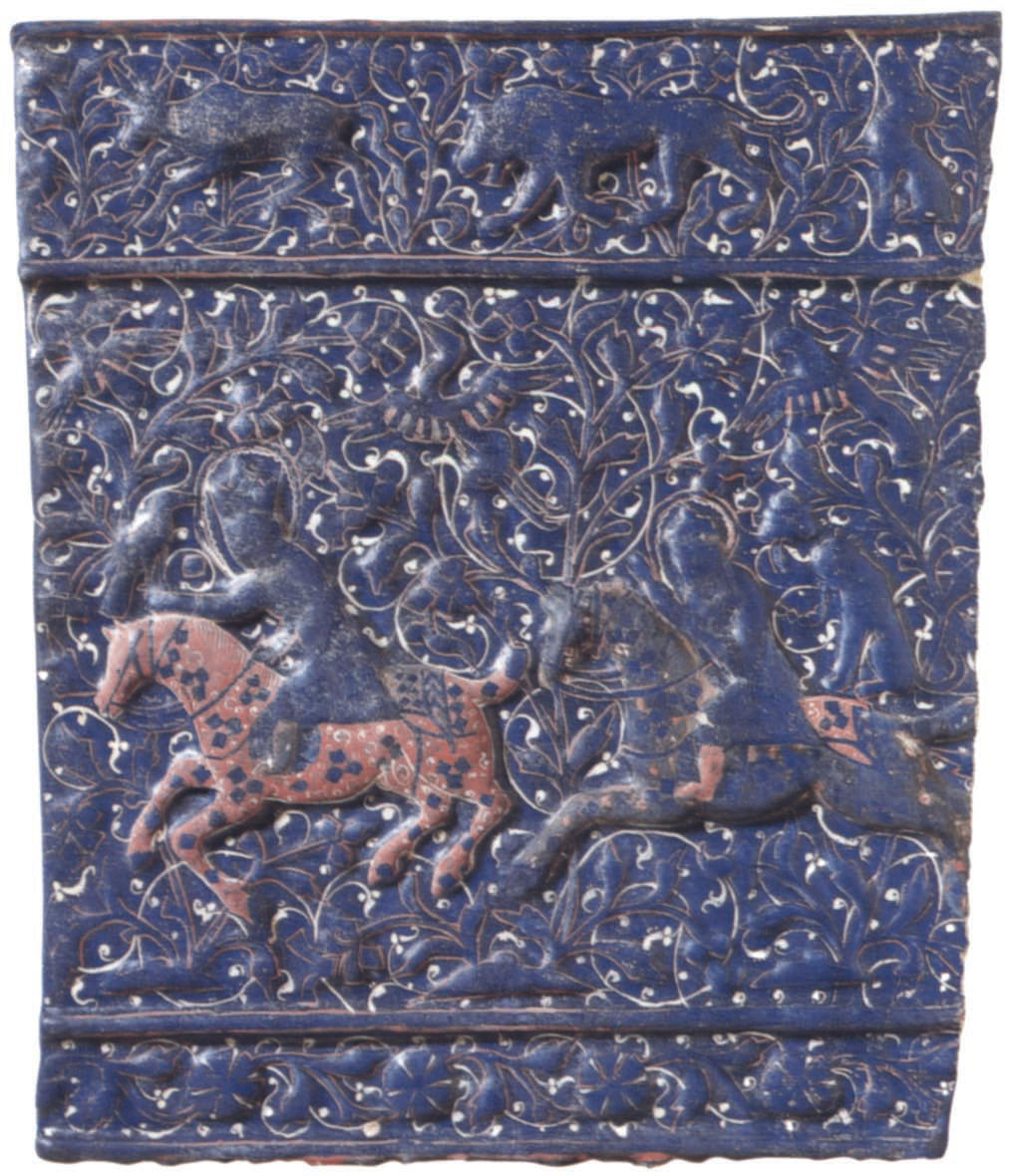Create an Amazon Wedding Registry

Try Amazon Audible Premium Plus and Get Up to Two Free Audiobooks
Ilkhanid Frieze Star Tile with Hunt Scene, Takht-i Sulaiman, Iran, 1270s.

Fig. 98 (cat. no. 94.). Frieze tile with hunters on horseback, Iran (probably Takht-i Sulaiman), 1270s.
Fritware, overglaze painted (lajvardina).
Miho Museum, Shigaraki, Japan (SS 1480)
94 Fig. 98
Frieze Tile
Iran (probably Takht-i Sulaiman), 1270s
Fritware, overglaze painted (Iajvardina)
52.5 x 44.5 cm (20⅝ x 17½ in.)
Miho Museum, Shigaraki, Japan (SS1480)
As in other frieze tiles of the period, the molded relief decoration here is in three registers:
a broad central zone between two narrower bands of unequal width that serve as borders.1
In the upper register is a file of animals depicted in various states of activity: a running bull, a pacing lion,
and a rabbit that has paused to look behind. The lower register is filled by a scrolling leaf vine with six-petaled rosettes.
In the central zone is a pair of mounted hunters, one crowned and holding a hawk, the other accompanied by a cheetah seated on his horseís rump.
The riders gallop to the left across a conceptualized landscape of tall, leafy, flowering plants, while a trio of birds flies above their heads.
Tiles evidently made from the same mold but decorated in the luster technique were excavated at Takht-i Sulaiman.2
Assadullahm Souren Melikian-Chirvani has related the central scene to two events described in the Shahnama (Book of Kings):
Bizhanís hunt in Gurgan, and Bahram Gurís hunt with a hawk and a cheetah.3
Companion frieze tiles depicting mounted hunters shooting at birds were also excavated at Takht-i Sulaiman and have likewise been associated with the Iranian national epic.4
Such tiles, along with others inscribed with verses from the Shahnama that were excavated at Takht-i Sulaiman (see cat. nos. 80-82),
may have been intended to link the founders of this palace with the traditions of Iranian kingship.
1. Miho Museum 1997, pp. 304-5, no. 148.
2. E. Naumann and R. Naumann 1969, fig. 6; R. Naumann and E. Naumann 1976, pp. 51-53. See also Masuya 1997, pp. 506-8.
3. Melikian-Chirvani 1984, pp. 268-69. Gluck 1980, no. 278, also connects this scene to the Shahnama, but identifies the two hunters as King Naiman and Bahram.
4. R. Naumann and E. Naumann 1976, pp. 51-53, pl. 8a; Masuya 1997, pp. 505-6. See also Melikian-Chirvani 1984, pp. 269-70.
Source: The Legacy of Genghis Khan Courtly Art and Culture in Western Asia 1256-1353
Other Ilkhanid Frieze Tiles, Takht-i Sulaiman, Kashan and Rayy, Iran, late 13th century.
Other Ilkhanid Illustrations of Costume & Soldiers


